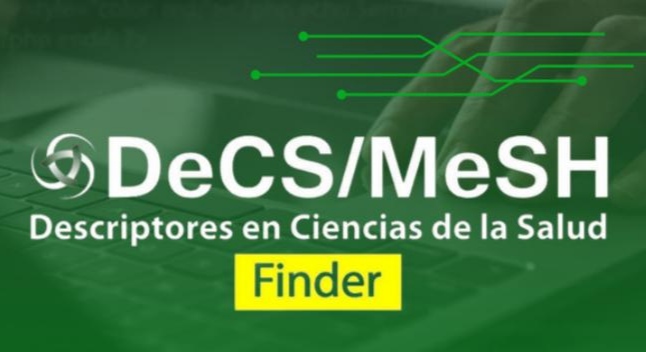Idiopathic Collapsing C1q Nephropathy, a Rare Form of Nephrotic Syndrome in Pediatrics. A Case Report
Keywords:
kidney diseases/ diagnosis, nephrotic syndrome/ diagnóstico, adolescent, pediatricsAbstract
Idiopathic collapsing C1q nephropathy is a rare disease with a poor prognosis and poor response to treatment, which progresses to renal failure. This case is presented to present the diagnosis of collapsing C1q nephropathy in a schoolchild. The patient is a 13-year-old white female with no history of disease. At age 10, she was admitted for generalized, cold, morning edema, with easy godet, associated with foamy urine, positive Tarral maneuver, and abolished vesicular murmur in the lung bases. When the clinical picture was correlated with the analytical results, it was interpreted as a normocomplementemic nephrotic syndrome with normal renal function. The patient is resistant to treatment with steroids and immunosuppressants and the renal biopsy shows a histopathological pattern of collapsing C1q nephropathy. Clinical remission is not achieved, but with treatment protocols, normal renal function and a stable evolution are achieved, allowing for social integration.
Downloads
References
Peng Y, Ju T, Gao C, Xia Z, Wang M, Sun X, et al. A clinicopathological and prognostic study of 18 children whith C1q nephropathy and focal segmental glomerulosclerosis: and 18 year experience from a single center. J Nephrol [Internet]. 2023 Jul [citado 7 Jul 2024];36(6):1615-25. Disponible en: https://link.springer.com/article/10.1007/s40620-023-01679-9
Gaur S, Patrick R, Vankalakunti M, Phadke K. C1q Nephropathy in children with nephrotic syndrome: Treatment strategies and outcomes. Indian J Nephrol [Internet]. 2022 Jan-Feb [citado 7 Jul 2024];32(1):54-9. Disponible en: https://pmc.ncbi.nlm.nih.gov/articles/PMC8916143/pdf/IJN-32-54.pdf
Vega J, Gutiérrez E, Méndez GP, Bofill L. Nefropatía por C1q: una rara variedad de síndrome nefrótico. Caso clínico. Rev Med Chilena[Internet]. 2020 May[citado 7 Jul 2024];148(5):702-6. Spanish. Disponible en: https://www.revistamedicadechile.cl/index.php/rmedica/article/view/7984/5876
Zhang P, Yang X, Fang X, Xu C, Gao C, Xia Z. Anti-C1q antibodies in lupus nephritis children with glomerular microthrombosis. Nephrology [Internet]. 2023 Sep[citado 7 Jul 2024];28(9):485-94. Disponible en: https://onlinelibrary.wiley.com/doi/epdf/10.1111/nep.14194
Silvia CAD, Custódio FB, Monteiro MLGDR, Araújo SA, Araújo LS, Correa RRM, et al. Focal and Segmental Glomerulosclerosis and Membranous Nephropaty overlapping in a patient with Nephrotic Syndrome: a case report. J Bras Nefrol [Internet]. 2020 Mar[citado 7 Jul 2024];42(1):113-7. Disponible en: https://www.bjnephrology.org/wp-content/uploads/articles_xml/2175-8239-jbn-2018-0239/2175-8239-jbn-2018-0239-pt.pdf
Romaniouk Jakouler I, Mouzo Javier R, Pérez Nieto C, Romero A, Simal F, Costañón B. Enfermedad de cambio mínimo compatible con NC1q en paciente pediátrico. Evolución y tratamiento de una enfermedad complicada. Carta al director. Rev Nefrolog. 2019 Ene-Feb;39(1):84-6. doi: http://dx.doi.org/10.1016/j.nefro.2018.05.004
Jenette JC, Hipp CG. C1q nephropathy: a distinct pathology entity usually causing nephrotic syndrome. Am J Kidney Dis. 1985 Aug;6(2):103-10. doi: http://dx.doi.org/10.1016/s0272-6386(85)80150-5
Campañá NG, Chong A, Durán S, Hernández S, Valdés M. Primer caso registrado en Cuba de nefropatía C1q. Rev Cubana Pediatr [Internet]. 2013 Jun [citado 7 Jul 2024]; 85(2):258-64. Disponible en: http://scielo.sld.cu/scielo.php?script=sci_arttext&pid=S0034-75312013000200013
Kim K, Son HE, Ryu JY, Lee H, Han SH, Ryu DR, et al. C1q nephropathy in adults is a form of focal segmental glomerulosclerosis in terms of clinical characteristic. PLoS One. [Internet]. 2019 Apr[citado 7 Jul 2024];14(4):e0215217.Disponible en: https://pmc.ncbi.nlm.nih.gov/articles/PMC6474651/
Tariq N, Nasir H, Ahamed TA, Usman M, Ahamed KS. C1q nephropathy: A multifaceted disease with infrequent diagnosis. J Ayub Med Coll Abbottabad [Internet]. 2019 Jul-Sep[citado 7 Jul 2024];31(3):308-13. https://jamc.ayubmed.edu.pk/jamc/index.php/jamc/article/view/6137/2739
Brown CB, Cameron JS, Turner DR, Chantler C, Ogg CS, Williams DG, et al. Focal segmental glomerulosclerosis with rapid decline in renal function (“malignant FSGS”). Clin Nephrol[Internet]. 1978 Aug [citado 7 Jul 2024];10(2):51-61. Disponible en: https://pubmed.ncbi.nlm.nih.gov/699400/
Satoru K, Santoriello D, Bomback AS, Stokes MB ,Barry M, Batal I, et al. The spectrum of kidney biopsy findings in HIV infected patients in the modern era. Kidney International. 2020;97(5):1006-16. doi: https://doi.org/10.1016/j.kint.2020.01.018
Morales E, Alonso M, Gutiérrez E. Actualización de la glomerulopatía colapsante. Med Clín (Barc). 2019;152(9):361-7.doi: https://doi.org/10.1016/j.medcli.2018.10.021
Cutrim ÉMM, Neves PDMdM, Campos MAG, Wanderley DC,Teixeira-Júnior AAL, Muniz MPR, et al. Collapsing glomerulopathy: A review by the collapsing Bazilian consortium. 2022 Front. Med. 9:846173. doi: https://doi.org/10.3389/fmed.2022.846173
Floege J, Barbour SJ, Cattran DC, Hogan JJ, Nachman PH, Tang SCW, et al. Management and treatment of glomerular deseases (part 1): conclusions from a Kidney desease: improving global outcomes (KDIGO) controversies conference. Kidney Int[Internet]. 2019[citado 7 Jul 2024]; 95:268-80. Disponible en: https://kdigo.org/wp-content/uploads/2017/02/KDIGO-GN-Conference-Report-Part-1.pdf
Rovin BH, Coster DJ, Cattran DC, Gibson KL, Hogan JJ, Oloeller MJ, et al. Management and treatment of glomerular deseases (part 2): conclusions from a Kidney desease: improving global outcomes (KDIGO) controversies conference. Kidney Int [Internet]. 2019; 95:268-80. https://www.semanticscholar.org/paper/Management-and-treatment-of-glomerular-diseases-2)%3A-Rovin-Caster/132cb0d16848ef72ae3f7fb64cd6b8ab56f27eef
Published
How to Cite
Issue
Section
License
Copyright (c) 2024 Alberto Pérez Montoto

This work is licensed under a Creative Commons Attribution-NonCommercial 4.0 International License.
Medimay protects copyright from the very first moment the submission is made, but upon publication it assumes a Creative Commons 4.0 (cc-by-nc) license, which allows the use of the work to share (copy and redistribute the material in any medium or format) and adapt (remix, transform and build from the material) as long as exclusive mention is made of the publication in the journal as a primary source, prohibiting its commercialization. The author always retains his/her right.















 This site is licensed under a
This site is licensed under a